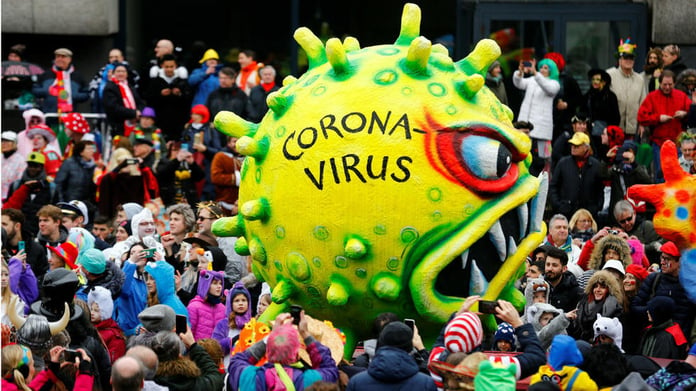How do you know if you are affected by coronavirus? Is the incubation period always 14 days? Should we talk about a pandemic? As the virus continues to spread around the world, France24 takes stock of the latest information.
The coronavirus epidemic “is on our doorstep”, assured Tuesday, February 25 the French Minister of Health, Olivier Veran, while recalling that today, there were “no more sick people in circulation in France””. The country remains alert to a possible return of the virus, also called Covid-19, which is now spreading in South Korea, Iran, and Italy.
Should we fear the Covid-19 more than flu? Here are the scientific elements that help to better understand the virus.
The new coronavirus behaves just like influenza viruses, say scientists who have studied samples from infected patients in China. This implies that it can spread more easily than previously thought.
Covid-19 is spread from person to person when an infected person expires, coughs, or sneezes. It can also spread via contaminated surfaces such as doorknobs or railings.
Symptoms are varied, such as fever, cough, shortness of breath, and difficulty breathing. Mild cases can cause cold symptoms, while severe cases can cause pneumonia, severe acute respiratory disease, kidney failure, and death.
The covid-19 infection has an incubation period of between one and 14 days, according to a study by the Journal of the American Medical Association. A 70-year-old Chinese man developed coronavirus symptoms after a 27-day long incubation period, but that remains exceptional, experts say.
Anyone who has stayed in risk areas (China, Singapore, South Korea, Italian regions of Lombardy and Veneto) should take their temperature twice a day, watch for “the appearance of symptoms of respiratory infection (cough, difficulty breathe …) “and wear a surgical mask when they are in front of another person and when they must go out, according to the recommendations of the ministry.
Infectious disease and virus specialists estimate that each person infected in the epidemic infects, on average, two to three other people.
The case fatality rate is between 2% and 4% in Wuhan and 0.7% outside Wuhan.
It is premature to speak about the pandemic , affirmed Monday, February 24, the World health organization (WHO). Experts believe that the epidemic is not out of control in the world and does not cause large-scale deaths.
The situation in China is generally improving, according to the WHO: the epidemic experienced a “peak”, then a “plateau”, between January 23 and February 2, just after the quarantine of Wuhan and its 11 million inhabitants.
Scientists say the new coronavirus originated in bats and then passed to humans, possibly via an intermediate animal species. It is part of a family of viruses which takes its name from its shape under the microscope: spherical with spikes in the shape of a “crown”.


